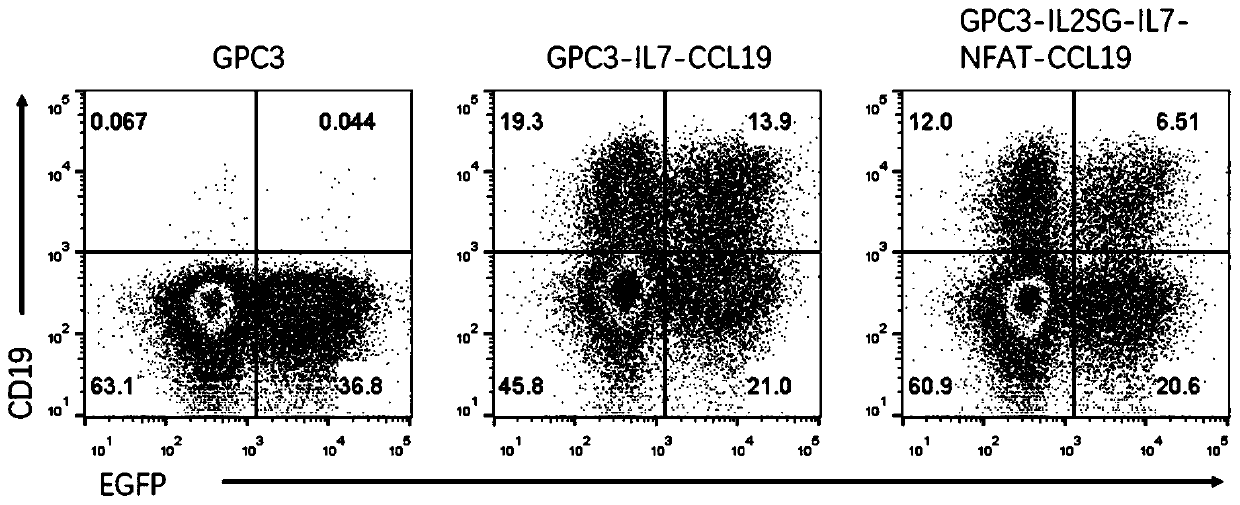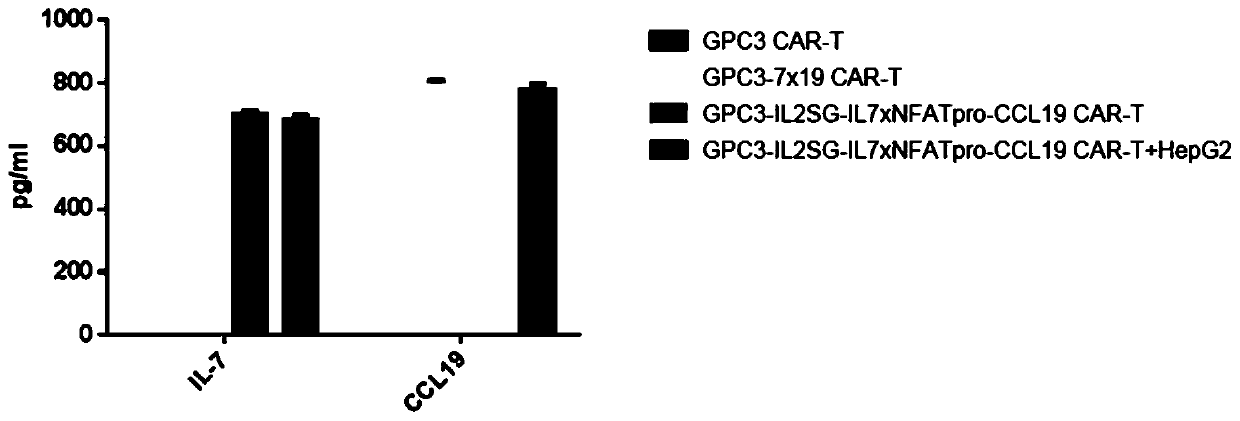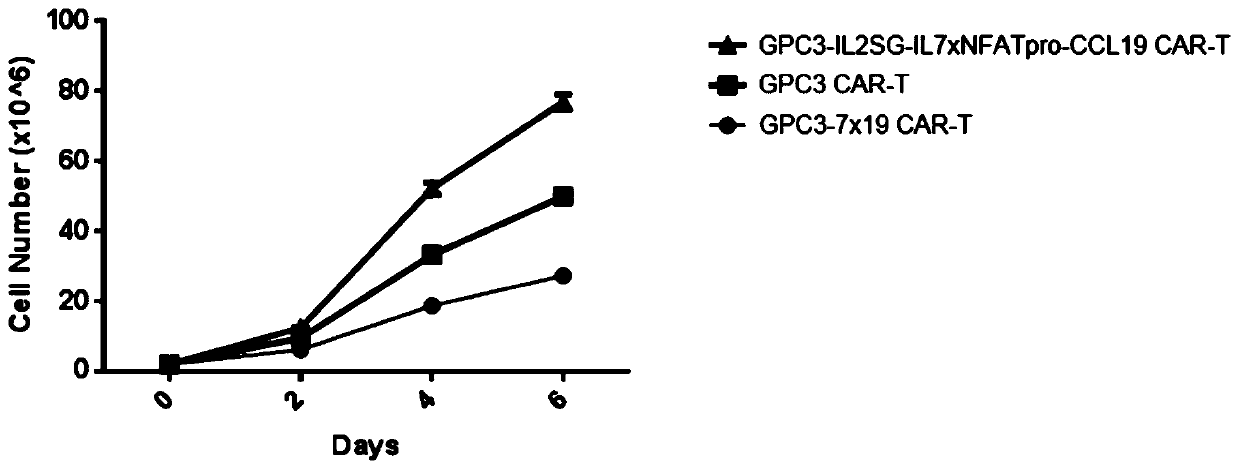Chimeric antigen receptor T cell and application thereof
A chimeric antigen receptor, cell technology, applied in receptor/cell surface antigen/cell surface determinant, application, animal cells, etc., can solve the problem that exogenous IL-7 protein cannot be secreted outside T cells, exogenous IL-7 protein cannot be secreted, and peripheral blood immune cells cannot be recruited into tumors.
- Summary
- Abstract
- Description
- Claims
- Application Information
AI Technical Summary
Problems solved by technology
Method used
Image
Examples
Embodiment 1
[0127] Example 1 Preparation of T cells expressing secretory IL-7 and conditional CCL19
[0128] (1) Optimization strategies for cytokines and chemokines
[0129] T cells do not secrete IL-7 under natural conditions, and exogenously introduced IL-7 cannot be secreted outside T cells after being transcribed and translated. The signal peptides of CAR-T cells are replaced by signal peptides of proteins secreted by T cells, such as signal peptides of IL-2 and IL-4; in order to maximize the recruitment of immune cells into the tumor and improve the anti-tumor effect of CAR-T cells, the invention Humans changed the continuous expression of CCL19 to conditional expression, and used the promoter 6×NFAT-RE-minP regulated by the nuclear factor of activated T cells (NFAT) to regulate the expression of CCL19, so that CAR-T cells recognized tumor antigens and were activated. Only then can the expression of CCL19 be activated, thereby specifically recruiting immune cells into the tumor.
...
Embodiment 2
[0159] Example 2 Expression of CAR molecules, IL-7 and CCL19 by T cells
[0160] Since the lentiviral vector expressing CAR molecules carries the EGFP gene, EGFP can be used to indicate the expression of CAR molecules on T cells. Since the lentiviral vectors expressing IL-7 and CCL19 carry tCD19 (only contains the transmembrane domain and extracellular domain of human CD19), which can indicate the expression of IL-7 and CCL19 on T cells through CD19; when T cells are infected by the virus for 48 hours, EGFP and CD19 on T cells are detected by flow cytometry, and the expression of CAR Molecules, IL-7 and CCL19 T cells; the flow cytometer used in this example is ACEA Novocyte, and the flow cytometry antibody with the clone number HIB19 from Biolegend Company is used to detect CD19.
[0161] The result is as figure 1 Shown are CAR-T cells expressing only CAR (GPC3 CAR-T), CAR-T cells expressing CAR, IL-7 and CCL19 (GPC3-7×19CAR-T), and CAR molecules expressing, secreting IL-7 a...
Embodiment 3
[0162] Example 3 Secretion of IL-7 and CCL19 by CAR-T cells
[0163] Take 2×10 of each of the three CAR-T cells confirmed in Example 2 6 One, cultured with fresh T cell culture medium for 24 hours, collected cell supernatant;6 Each was co-cultured with the same amount of HepG2 tumor cells expressing GPC3 tumor antigen for 24 hours, and the cell supernatant was collected; ELISA kit (R&D system) was used to detect the secretion of IL-7 and CCL19 by each cell.
[0164] Test results such as figure 2 As shown, there is no IL-7 and CCL19 in the culture supernatant of GPC3 CAR-T cells, only CCL19 and no IL-7 in the culture supernatant of GPC3-7×19 CAR-T cells, GPC3-IL2SG-IL7×NFATpro-CCL19 The culture supernatant of CAR-T cells has only IL-7 and no CCL19, and the culture supernatant of GPC3-IL2SG-IL7×NFATpro-CCL19 CAR-T cells co-cultured with HepG2 tumor cells can simultaneously detect IL-7 and CCL19.
[0165] This shows that the modified GPC3-IL2SG-IL7×NFATpro-CCL19 CAR-T cells c...
PUM
 Login to View More
Login to View More Abstract
Description
Claims
Application Information
 Login to View More
Login to View More - R&D
- Intellectual Property
- Life Sciences
- Materials
- Tech Scout
- Unparalleled Data Quality
- Higher Quality Content
- 60% Fewer Hallucinations
Browse by: Latest US Patents, China's latest patents, Technical Efficacy Thesaurus, Application Domain, Technology Topic, Popular Technical Reports.
© 2025 PatSnap. All rights reserved.Legal|Privacy policy|Modern Slavery Act Transparency Statement|Sitemap|About US| Contact US: help@patsnap.com



